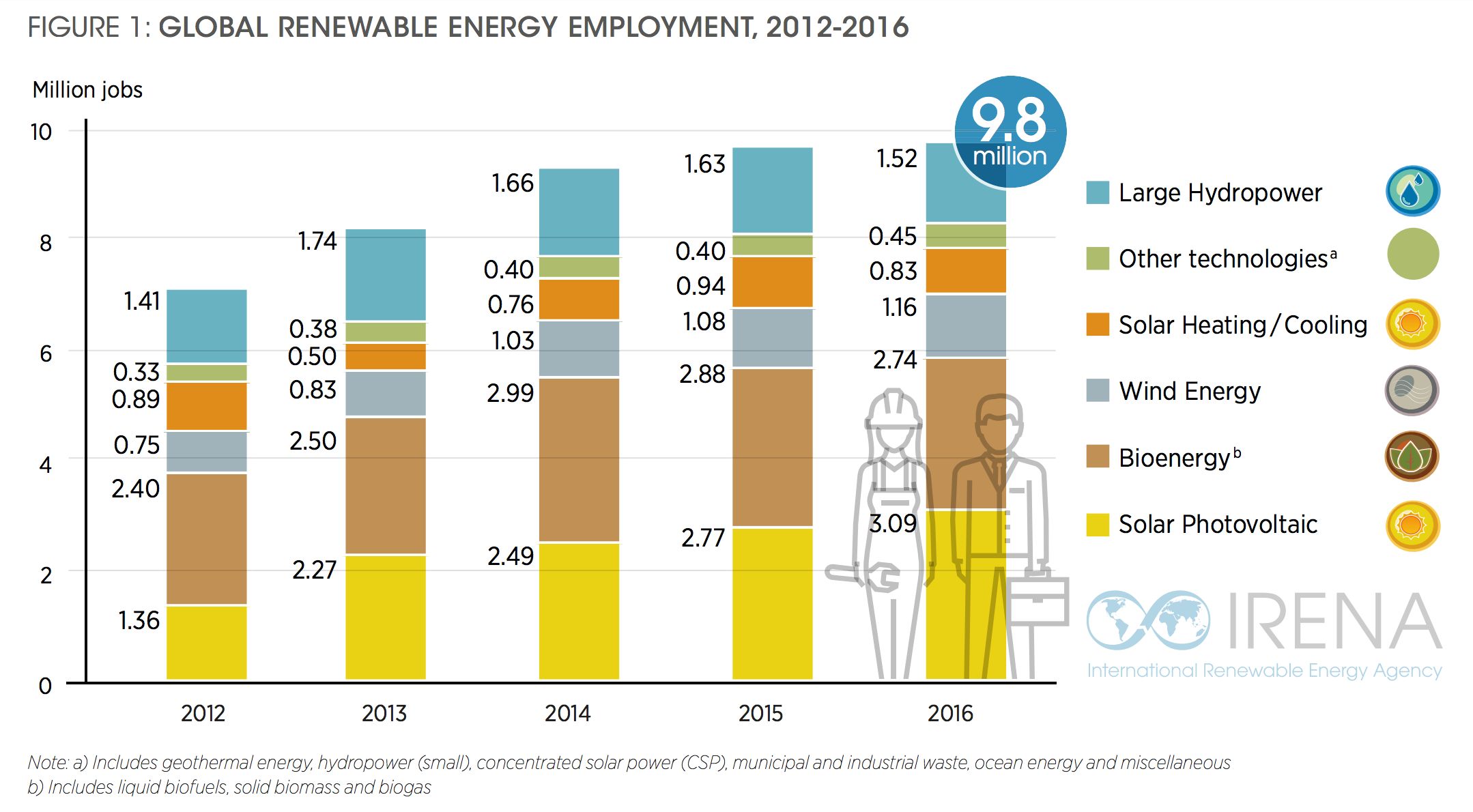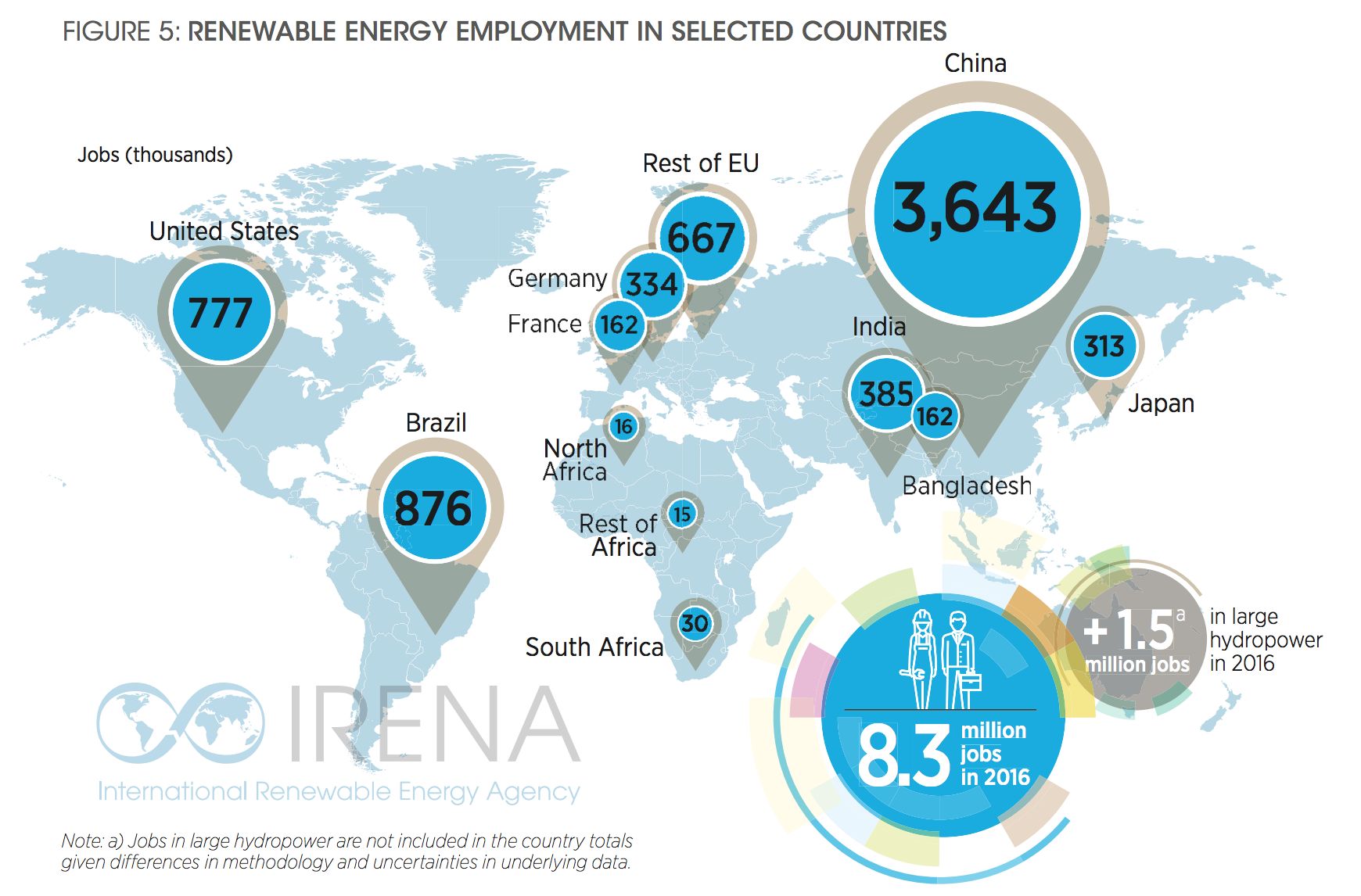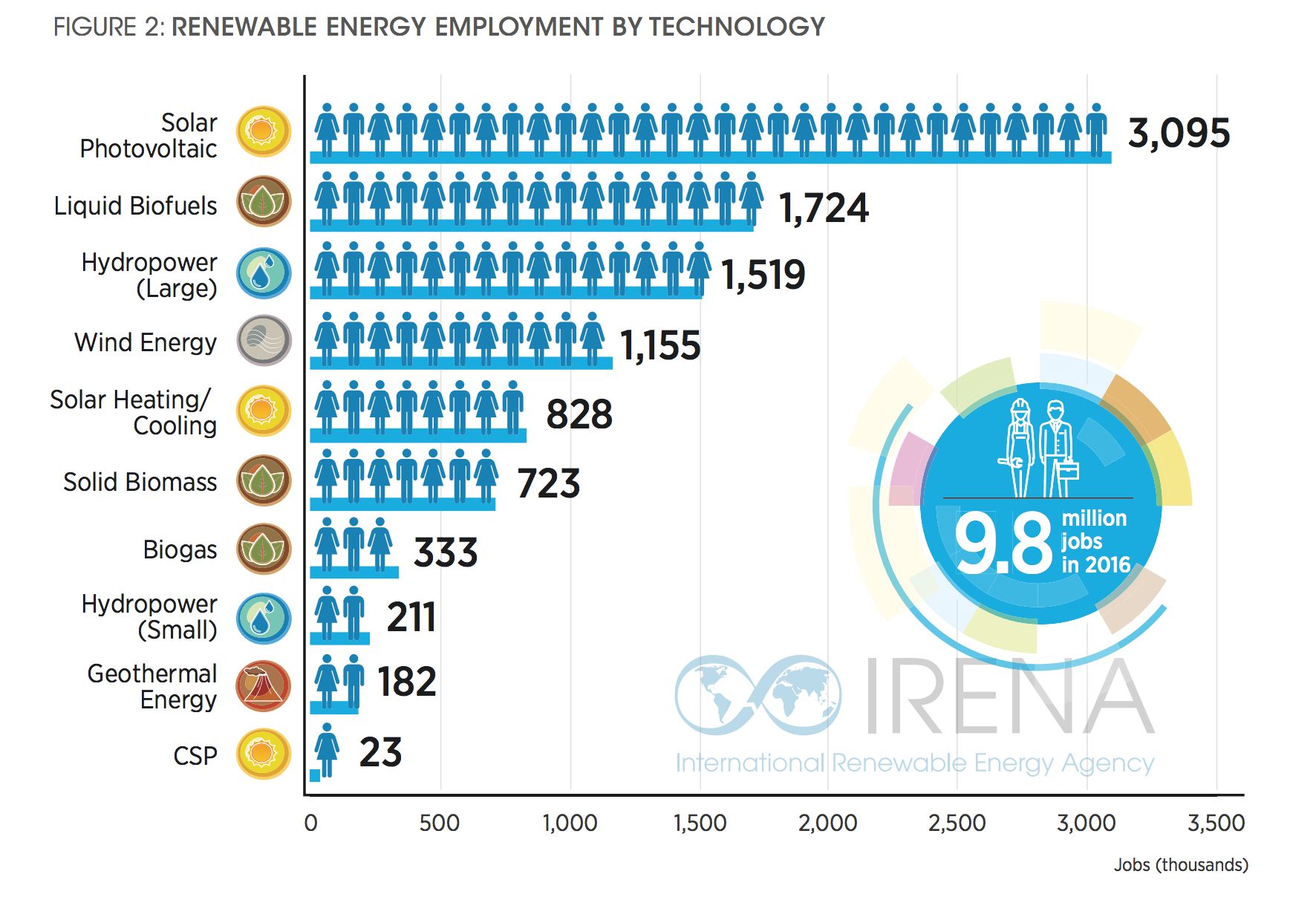Solar and wind are outpacing coal and natural gas in terms of job creation, both in the United States and around the world.
In a report released Tuesday, the International Renewable Energy Agency (IRENA) reported that employment in the renewable energy sector, including solar, wind, biofuels, hydropower and other carbon-free resources, rose to 9.8 million people in 2016, a 1.1 percent increase from the previous year.
Excluding large hydropower, the green power sector employed 8.3 million people in 2016, featuring a growth rate of 2.8 percent, according to IRENA's annual jobs review. That’s the lowest growth rate the organization has tracked since 2012, and includes some job losses in hydropower and solar heating.
But solar PV and wind power together have more than doubled their employment since 2012, with solar growing to 3.1 million jobs and wind accounting for 1.2 million jobs last year.
"As the scales continue to tip in favor of renewables, we expect that the number of people working in the renewables sector could reach 24 million by 2030, more than offsetting fossil-fuel job losses and becoming a major economic driver around the world," Adnan Z. Amin, IRENA's director-general, said in a statement.

IRENA, an intergovernmental agency that analyzes and funds green energy projects around the world, ascribed the slower growth last year to “lower investments, rising automation and policy changes, resulting in job losses in some major markets, including Brazil, Japan, Germany and France.”
At the same time, ever-falling costs for solar and wind energy, along with pro-renewable policies, continued to spur deployment of renewables at a record pace in some countries.
China, the world’s biggest solar and wind manufacturer, remained the biggest jobs creator by far, with 3.64 million employed across the industries covered in the report. The continent of Asia accounted for 62 percent of the world’s green energy workforce. A thriving biofuel industry put Brazil in second place with 876,000 workers, and the United States' appetite for solar and wind power powered put it in third place, with 777,000.

Solar PV was by far the leader in job creation -- but not equally across the world.
Driven by a surge of installations in markets such as China, Japan and the United States, employment increased by 12 percent to approach 3.1 million jobs in 2016. China, the world’s biggest maker of solar panels, accounted for more than half of these jobs. Japan and the European Union, in marked contrast, saw solar jobs decline by 20 percent and 22 percent, respectively.
While the report didn’t deliver specific comparative figures for global fossil-fuel industry employment over the same time, it did note that the “trend remains positive in contrast to traditional energy industries, which have been facing employment cuts in several markets." Specifically, the coal industry has been shedding jobs in China, India, Germany and the United States, while oil and gas industries shed at least 440,000 jobs in layoffs through 2015 and 2016.
Renewable energy projects also tend to create more jobs per unit of energy generated than their fossil fuel equivalents, the report noted. “Solar PV, for instance, creates more than twice the number of jobs per unit of electricity generation compared with coal or natural gas,” largely due to the labor-intensive process of manufacturing and installing gigawatts' worth of solar panels every year.




